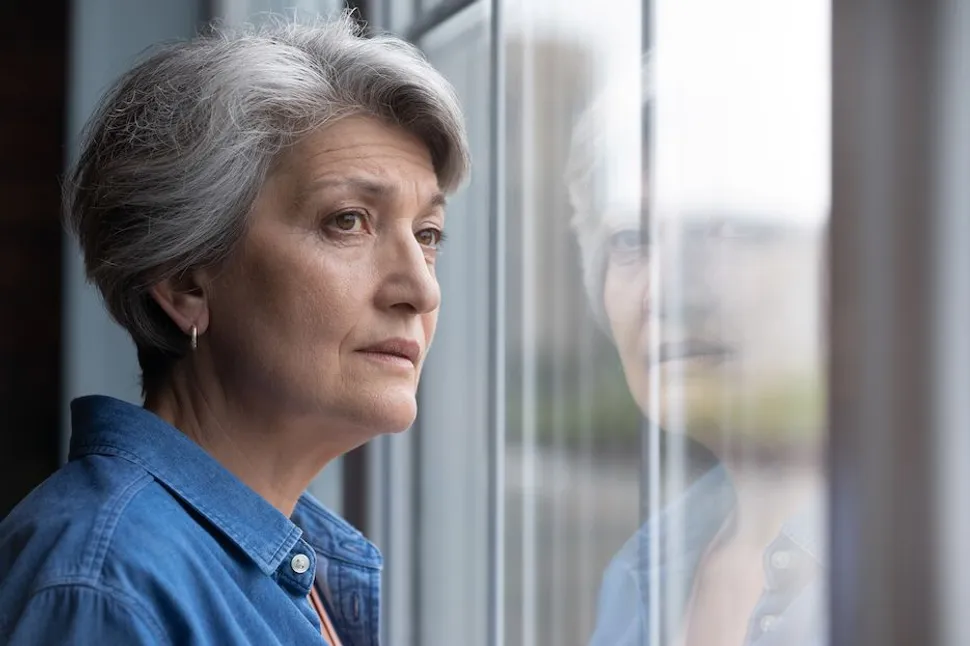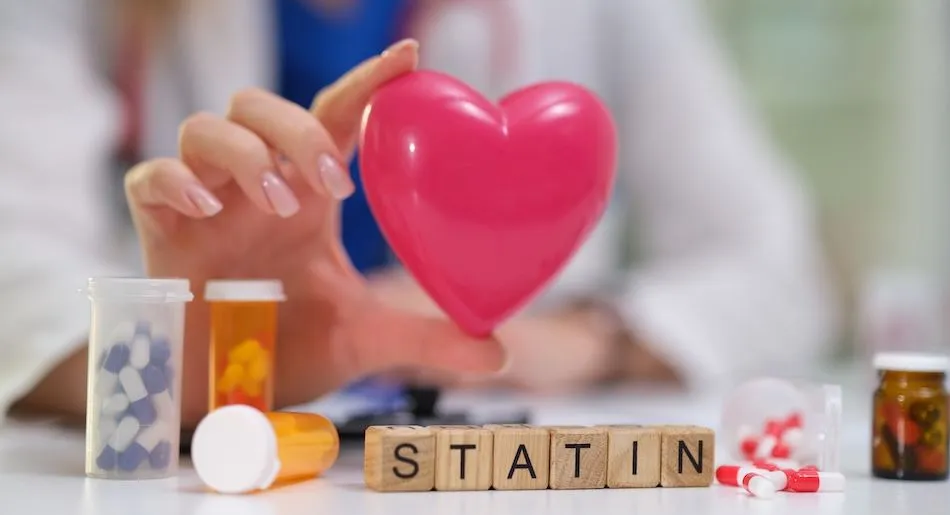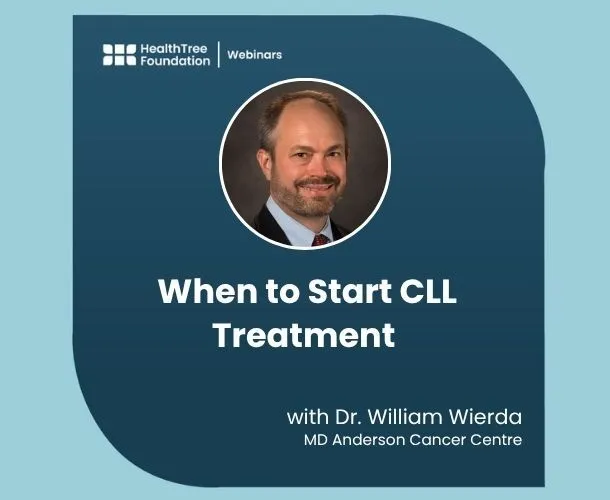Living with CLL: What Can I Expect?

The Patient Journey Varies
One-third of people with CLL will never require treatment. They will not experience a negative impact on quality of life or increased risk of death. These patients die with CLL, but not from it.
It is possible for CLL to remain stable for years or even decades. In the typical scenario, however, the number of CLL cells in the blood, lymph nodes, and bone marrow eventually increases without treatment.
At the time of diagnosis, about 70% of patients with CLL have no symptoms. CLL tends to be slow progressing, and treatment is unnecessary until symptoms are problematic or CLL-related complications arise (such as anemia or recurrent infections).
You may be one of the two-thirds of patients with CLL who do require treatment, either upon diagnosis or eventually. In addition to age, overall health, and disease stage, several genetic factors determine your prognosis; that is, the likely outcome of your disease. These prognostic factors include gene mutations, missing chromosome parts, and extra chromosomes. Your doctor will use the fluorescence in situ hybridization (FISH) test and other analyses to check if you have any of these changes. They can be associated with favorable outcomes or with higher-risk CLL and shorter treatment-free periods.
How Will CLL Affect My Health?
Your CLL journey also will depend on the specific treatment you and your physician select: how your body responds to it and whether a decrease of CLL (response) or disappearance of CLL (remission) is achieved. The treatment landscape was recently transformed by powerful new agents offering longer life and better quality of life. For more information on the variety of treatments available, please see the CLL Treatment Options unit at Healthtree University for CLL.
Complete remission of CLL is achieved when:
- Blood cell counts return to normal
- Enlarged lymph nodes and organs resume normal size
- Symptoms of leukemia disappear
- Bone marrow shows no evidence of CLL
Some patients with CLL experience relapse. A relapse is the return of cancer after it has been in remission for more than 6 months. Other patients have refractory CLL, which means initial therapy did not achieve remission. The good news is refractory disease may still enter remission with different treatments, and relapsed disease can be sent back into remission with additional therapy. It is not uncommon for patients to require several treatments in their lifetime. CLL can be controlled in this way for many years.
Although current initial treatments are very effective, CLL remains incurable. The National Cancer Institute estimates 5-year survival to be 88.5%* (based on data 2014-2020).
Pain Is Not Usual
The most common symptoms of CLL - weakness, fatigue, weight loss, chills, fever, and night sweats - do not involve pain. However, while your spleen may remain unaffected by CLL, it can also become massively enlarged. This condition is called splenomegaly, and it can be painful or cause a sensation of “fullness” in the belly.
Pain may be a side effect of treatment for CLL. For example, some patients experience chest pain during infusion of immunotherapy, and muscle and joint pain is a possibility with BTK inhibitors.
People with CLL have a higher risk of skin, lung, kidney, and other infections. Their B lymphocytes, which usually make antibodies to help fight infection, now function poorly. Infections may range from frequent colds or cold sores, to pneumonia and other serious infections … which may be painful.
Lastly, pain may arise from bone damage caused by leukemia cells growing in the bone marrow. Bone damage used to be considered rare in CLL, but it is now understood to be somewhat more common, especially at more advanced stages - but still rare compared to other blood cancers.
All symptoms of CLL may intensify at later stages or in faster-developing CLL.
Serious Complications of CLL Are Rare
Rapidly advancing disease might be “Richter transformation,” a rare condition (up to 10% of patients with CLL) in which CLL changes into an aggressive, hard-to-treat type of lymphoma. Prognosis is poor. Even more rarely, CLL may transform into other types of leukemia, which also can be hard to treat.
*Note: Because survival statistics are derived from large groups of people, they cannot be used to predict exactly what will happen to an individual. No two patients are entirely alike, and treatment and responses to treatment can vary greatly.
Join HealthTree for CLL to Learn More About CLL and Its Treatments
We invite you to join the HealthTree for CLL community by clicking on the button below. Stay updated with our newsletters, participate in our virtual events, and meet other patients like you. Take advantage of these resources as you navigate your illness.
Click Here to Create a Free Account
Sources
The Patient Journey Varies
One-third of people with CLL will never require treatment. They will not experience a negative impact on quality of life or increased risk of death. These patients die with CLL, but not from it.
It is possible for CLL to remain stable for years or even decades. In the typical scenario, however, the number of CLL cells in the blood, lymph nodes, and bone marrow eventually increases without treatment.
At the time of diagnosis, about 70% of patients with CLL have no symptoms. CLL tends to be slow progressing, and treatment is unnecessary until symptoms are problematic or CLL-related complications arise (such as anemia or recurrent infections).
You may be one of the two-thirds of patients with CLL who do require treatment, either upon diagnosis or eventually. In addition to age, overall health, and disease stage, several genetic factors determine your prognosis; that is, the likely outcome of your disease. These prognostic factors include gene mutations, missing chromosome parts, and extra chromosomes. Your doctor will use the fluorescence in situ hybridization (FISH) test and other analyses to check if you have any of these changes. They can be associated with favorable outcomes or with higher-risk CLL and shorter treatment-free periods.
How Will CLL Affect My Health?
Your CLL journey also will depend on the specific treatment you and your physician select: how your body responds to it and whether a decrease of CLL (response) or disappearance of CLL (remission) is achieved. The treatment landscape was recently transformed by powerful new agents offering longer life and better quality of life. For more information on the variety of treatments available, please see the CLL Treatment Options unit at Healthtree University for CLL.
Complete remission of CLL is achieved when:
- Blood cell counts return to normal
- Enlarged lymph nodes and organs resume normal size
- Symptoms of leukemia disappear
- Bone marrow shows no evidence of CLL
Some patients with CLL experience relapse. A relapse is the return of cancer after it has been in remission for more than 6 months. Other patients have refractory CLL, which means initial therapy did not achieve remission. The good news is refractory disease may still enter remission with different treatments, and relapsed disease can be sent back into remission with additional therapy. It is not uncommon for patients to require several treatments in their lifetime. CLL can be controlled in this way for many years.
Although current initial treatments are very effective, CLL remains incurable. The National Cancer Institute estimates 5-year survival to be 88.5%* (based on data 2014-2020).
Pain Is Not Usual
The most common symptoms of CLL - weakness, fatigue, weight loss, chills, fever, and night sweats - do not involve pain. However, while your spleen may remain unaffected by CLL, it can also become massively enlarged. This condition is called splenomegaly, and it can be painful or cause a sensation of “fullness” in the belly.
Pain may be a side effect of treatment for CLL. For example, some patients experience chest pain during infusion of immunotherapy, and muscle and joint pain is a possibility with BTK inhibitors.
People with CLL have a higher risk of skin, lung, kidney, and other infections. Their B lymphocytes, which usually make antibodies to help fight infection, now function poorly. Infections may range from frequent colds or cold sores, to pneumonia and other serious infections … which may be painful.
Lastly, pain may arise from bone damage caused by leukemia cells growing in the bone marrow. Bone damage used to be considered rare in CLL, but it is now understood to be somewhat more common, especially at more advanced stages - but still rare compared to other blood cancers.
All symptoms of CLL may intensify at later stages or in faster-developing CLL.
Serious Complications of CLL Are Rare
Rapidly advancing disease might be “Richter transformation,” a rare condition (up to 10% of patients with CLL) in which CLL changes into an aggressive, hard-to-treat type of lymphoma. Prognosis is poor. Even more rarely, CLL may transform into other types of leukemia, which also can be hard to treat.
*Note: Because survival statistics are derived from large groups of people, they cannot be used to predict exactly what will happen to an individual. No two patients are entirely alike, and treatment and responses to treatment can vary greatly.
Join HealthTree for CLL to Learn More About CLL and Its Treatments
We invite you to join the HealthTree for CLL community by clicking on the button below. Stay updated with our newsletters, participate in our virtual events, and meet other patients like you. Take advantage of these resources as you navigate your illness.
Click Here to Create a Free Account
Sources
about the author
Jacqueline M. Mahon, MA
Jacqueline is delighted to be writing for HealthTree Foundation. She has extensive experience working in blood cancers as well as other oncologic and therapeutic areas. When not writing, she may be gardening, hiking, or playing with her rescue cat, Merlin.
More on Navigating Your Health

Get the Latest Chronic Lymphocytic Leukemia Updates, Delivered to You.
By subscribing to the HealthTree newsletter, you'll receive the latest research, treatment updates, and expert insights to help you navigate your health.










